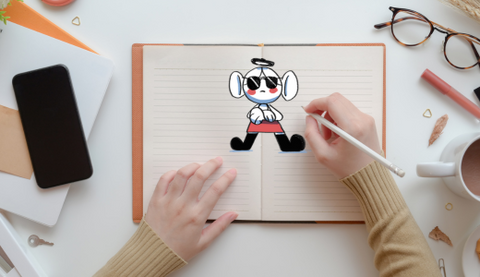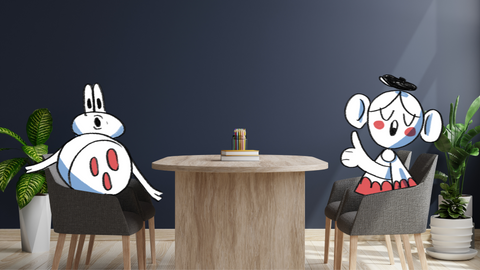To write is to edit. A good first draft starts long, and gets cut ruthlessly short. I wrote 80 cards for Storyteller Tactics, picked 54 of the best and dropped the rest. Trouble is, good stuff gets cut too.
Below is a draft version of a card we dropped called Storyboard. We felt it duplicated elements in other cards (and there's also a Workshop Tactics "Storyboard" card). But Storyboard might have been good for people trying to use stories in a presentation for the first time.
Storyboard
Pictures paint a thousand words. They help you think visually. And that helps us "see" what you mean.
People often use images in a presentation - slides, photographs or video. But even if you're telling a verbal story, with no visual aids, it helps to plan it out with a storyboard. Your story really works when it starts a movie playing in our heads.
If you're struggling to get images, try the Movie Time tactic. Use
Storyboard with Show and Tell tactic to prepare a presentation.
-
Create a bank of images for your story. Use Post-It notes. Sketch or doodle one image per note, with one or two words of explanation at the bottom of the note.
-
First, do the easy ones - the physical settings of the story.
- Who: a doodle for each individual in the story (you, your user, ete)
- What: the product or service you're working on, tools and obstacles that feature in the story.
- Where: locations
- When: times of day/night or seasons
-
Now, do the “invisible” elements of the story:
- Emotions: use emoji to reflect positive and negative states, specially around the problem you are solving.
- Abstracts: data, facts, concepts. Don't agonise about sketches, just a word will do.
-
Then create a timeline using the images. You can do a simple ‘Beginning - Middle - End, or put the images along a Story Arc (see Rags to Riches, No Easy Way tactics)
-
Finally, see if you can tell the story simply from the visual clues.
- What's my strongest image?
- Where should I put it in the story? (Open with it as an attention-grabber, or build up to it at the end?
- Is this image right for my audience?
- Does this image help my message or distract from it?
- Is it vivid and fresh, or a tired cliche?
-
OK, what if you haven't got an image for a vital part of the story?
This is the part where we rely on YOU, the storyteller. Don't show us a weak or distracting image, just talk directly to us.










